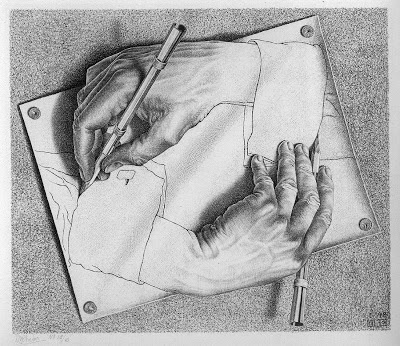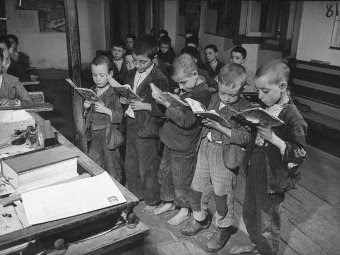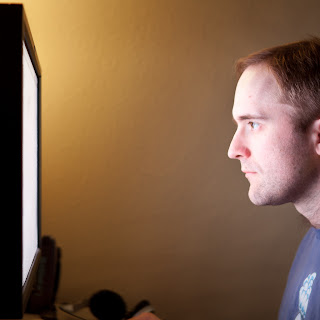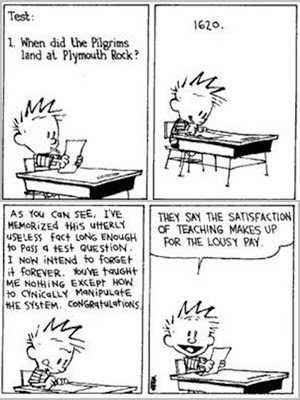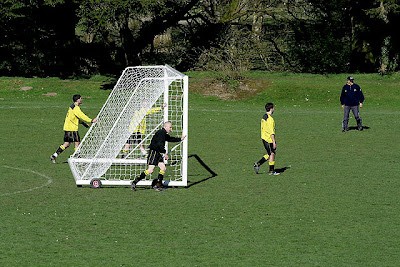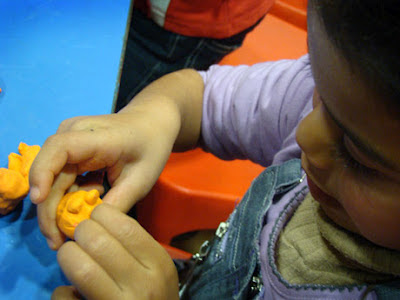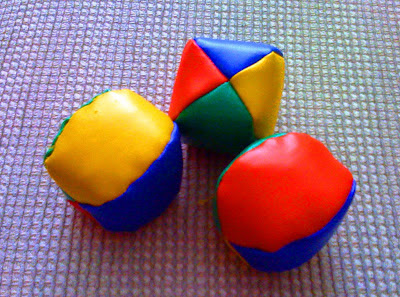Informal and self regulated learning are defining
characteristics of 21st Century education. Various commentators
suggest that as much as seventy percent of learning occurs outside of formal
educational settings (Cofer, 2000; Dobbs, 2000; Cross, 2006). If these are
accurate statistics, they present a significant challenge to schools, colleges
and universities. One challenge for education providers is to decide whether
they will support the desire of students to self regulate their learning
activities using personal technologies. Institutes that discourage the Bring
Your Own Device (BYOD) movement may be perceived by their students as
anachronistic. Those who do support BYOD for students and staff will need to
invest significant time and resources into ensuring cross platform operability
and seamless delivery to students’ personal technologies.
Self regulation of learning is thought to be a
characteristic of individual students (Beishuizen, 2008) but increasingly can be contextualised within social learning environments. A number of collaborative and
social networking tools regularly play a role within the average student PLE.
Self regulation has been shown to enhance and improve learning outcomes (Paris
& Byrnes, 1989; Steffens, 2008), enabling learners to achieve their full
potential (Delfino et al, 2008). Personal technologies are thought to enable
self-regulation at a number of levels, including the ‘object’ and ‘meta’ levels
of learning, supporting maintenance, adaptation, monitoring and control of a
variety of higher level cognitive processes (Nelson & Narens, 1990). By
using personal devices as ‘mindtools’ to offload simple cognitive tasks,
students can extend their own memories (Jonassen et al,
1999), build their confidence, and increase their motivation levels (Goldsworthy
et al, 2006). Further, personal
devices enable individuals to gain access and to participate at many levels
within their communities of practice, from ‘entering by learning’ through to
‘transcending by developing’ (Ryberg & Christiansen, 2008). All of this is
often achieved by students outside the formal surroundings of school or
university, with no time or location constraints.
Moreover, there is a sense that personal technologies
encourage learners to be self-determined in their approach to education. Hase
and Kenyon’s (2007) conceptualisation of self determined learning - or heutagogy
- places the emphasis on non-linear, self-directed forms of learning, and
embraces both formal and informal education contexts. The central tenet of
heutagogy is that people inherently know how to learn. The role of formal education
is to enable them to confidently develop these skills, encouraging them to critically
evaluate and interpret their own personal reality according to their own personal
skills and competencies. The ethos of heutagogy extends to learner choice,
where students can create their own programmes of study, a feature often seen
in the loose and unstructured aspects of some Massively Open Online Courses
(MOOCs). In many ways, heutagogy is aligned to other digital age theories, in
that it places an importance on ‘learning to learn’, and the sharing rather
than hoarding of that knowledge. It is not difficult to see that such sharing
of knowledge can be easily achieved through social media and the use of
personal digital technologies.
[This is an excerpt from a forthcoming publication entitled: Personal Technologies in Education: Issues, Theories and Debates]
References
Beishuizen, J.
(2008) Does a community of learners foster self-regulated learning? Technology, Pedagogy and Education, 17
(3), 183-193.
Cofer, D.
(2000) Informal
Workplace Learning. Practice Application Brief No. 10, U.S.
Department of Education: Clearinghouse on Adult, Career, and Vocational
Education.
Cross, J.
(2006) Informal Learning: Rediscovering
the natural pathways that inspire innovation and performance. London: John
Wiley and Sons.
Delfino, M.,
Dettori, G. and Persico, D. (2008) Self-Regulated Learning in Communities. Technology, Pedagogy and Education, 17
(3), 195-205.
Dobbs, K.
(2000) Simple Moments of Learning. Training, 35 (1), 52-58.
Goldsworthy,
S., Lawrence, N. and Goodman, W. (2006) The use of Personal Digital Assistants
at the Point of Care in an Undergraduate Nursing Program. Computers, Informatics, Nursing, 24 (3), 138-143.
Hase, S. and
Kenyon, C. (2007) Heutagogy: A Child of Complexity Theory, Complicity: An International Journal of
Complexity and Education, 4 (1), 111-118.
Jonassen, D.
H., Peck, K. and Wilson, B. G. (1999) Learning
with technology: A constructivist approach. Upper Saddle River, NJ:
Prentice-Hall.
Nelson, T. O.
and Nehrens, L. (1990) Metamemory: A theoretical framework and new findings. In
G. H. Bower (Ed.) The Psychology of
Learning and Motivation, New York, NY: Academic Press.
Paris, S. G.
and Byrnes, J. P. (1989) The constructivist approach to self-regulation and
learning in the classroom. In B. J. Zimmerman and D. H. Schunk (Eds.) Self Regulated Learning and Academic
Achievement: Theory, Research and Practice. New York, NY: Springer.
Ryberg, T. and
Christiansen, E. (2008) Community and social network sites as Technology Enhanced
Learning Environments. Technology,
Pedagogy and Education, 17 (3), 207-220.
Steffens, K.
(2008) Technology Enhanced Learning Environments for self-regulated learning: A
framework for research. Technology,
Pedagogy and Education, 17 (3), 221-232.
Drawing Hands by M C Escher

Theories for the digital age: Self regulated learning by Steve Wheeler is licensed under a Creative Commons Attribution-NonCommercial-ShareAlike 3.0 Unported License.

